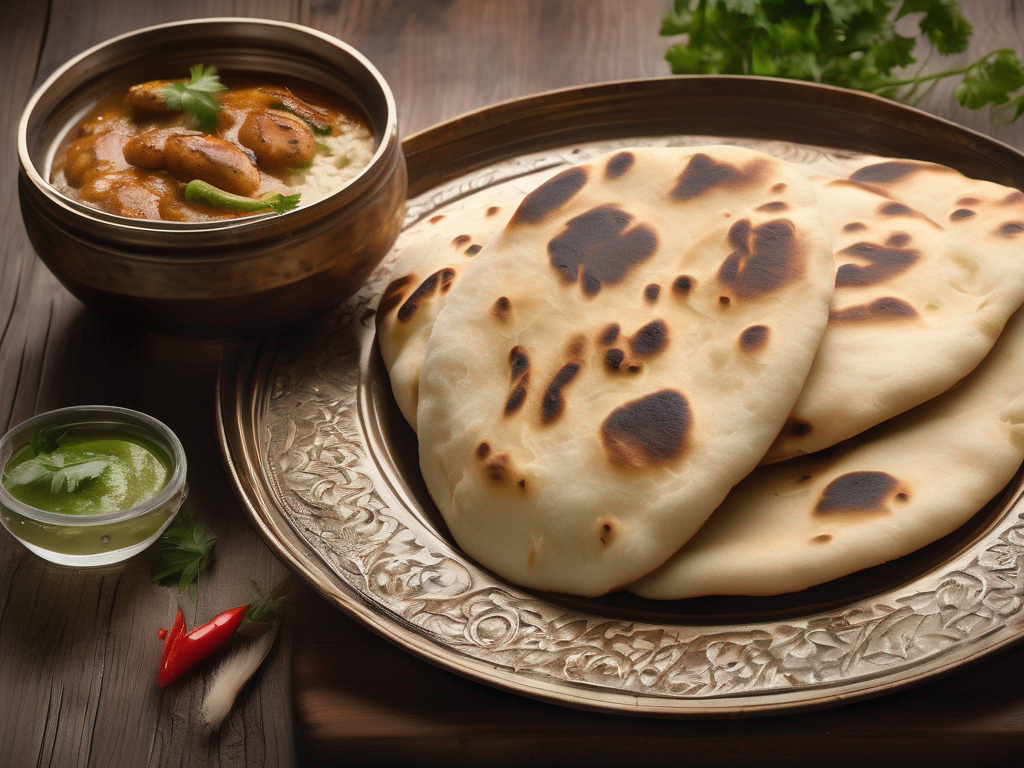
Signs that Naan Bread Has Gone Bad
Get Your Free Food Safety Cheat Sheet
30 most common foods with instant answers. Print it and stick it on your fridge—completely free!
Signs that Naan Bread Has Gone Bad
Naan bread is a popular and delicious flatbread that originates from South Asia. Whether you purchase it from a store or make it at home, it's essential to know how to identify when naan bread has gone bad to avoid any potential health risks. In this blog post, we will discuss the signs that indicate naan bread has spoiled and provide you with tips on how to properly store it to prolong its shelf life. (Naan)
Understanding Naan Bread
Before we delve into the signs of spoiled naan bread, let's first understand what naan bread is. Naan is a leavened, oven-baked flatbread that is typically made with flour, water, yeast, yogurt, and sometimes milk or ghee. It is a versatile bread that can be enjoyed on its own, with dips, curries, or used as a wrap for fillings.
Ingredients in Naan Bread
Naan bread typically contains the following ingredients:
- Flour
- Water
- Yeast
- Yogurt
- Milk or ghee
Each ingredient plays a crucial role in the texture and flavor of naan bread.
Signs that Naan Bread Has Gone Bad
Knowing how to identify spoiled naan bread is important to prevent foodborne illnesses. Here are some common signs that indicate naan bread has gone bad:
1. Mold Growth
- Mold growth is a clear indication that naan bread has spoiled.
- Check for any fuzzy, green, or white patches on the surface of the bread.
2. Unpleasant Odor
- Spoiled naan bread may emit a sour, musty, or off-putting smell.
- If the bread smells different from its usual aroma, it is best to discard it.
3. Texture Changes
- Spoiled naan bread may become excessively dry, hard, or rubbery.
- Changes in texture can indicate that the bread is past its prime and no longer safe to eat.
4. Discoloration
- Any abnormal discoloration, such as dark spots or an uneven color on the naan bread, is a sign of spoilage.
- Fresh naan bread should have a uniform color and appearance.
5. Taste Test
- If you notice any of the above signs, do not taste the naan bread to check if it's still edible.
- Consuming spoiled bread can lead to food poisoning and other health issues.
Proper Storage Tips for Naan Bread
To ensure that your naan bread stays fresh and safe to eat for as long as possible, follow these storage tips:
- Refrigeration: Store naan bread in an airtight container or resealable bag in the refrigerator to extend its shelf life.
- Freezing: If you want to store naan bread for an extended period, consider freezing it. Wrap the bread in plastic wrap or foil before placing it in the freezer.
- Thawing: When ready to eat frozen naan bread, thaw it in the refrigerator overnight or reheat it in the oven for a few minutes.
- Avoid Moisture: Keep naan bread away from moisture to prevent mold growth. Store it in a dry place at room temperature.
Conclusion
In conclusion, being able to recognize the signs that naan bread has gone bad is crucial for maintaining food safety and preventing foodborne illnesses. Mold growth, unpleasant odors, texture changes, discoloration, and off flavors are all indicators that naan bread is spoiled and should be discarded. By following proper storage practices and being mindful of these signs, you can enjoy fresh and delicious naan bread while keeping yourself and your loved ones safe. Remember, when in doubt, it's always best to err on the side of caution and throw out any questionable naan bread. (Naan)
Authoritative Food Safety References
These agencies and university labs inform every tip and health precaution we publish.
USDA FoodKeeper – Cold Storage Guidelines
Official refrigerator, freezer, and pantry timelines maintained by the U.S. Department of Agriculture.
Visit USDA FoodKeeperFDA Produce Safety Rule & Grower Guidance
Field-to-fridge handling practices that prevent contamination of fruits, vegetables, and leafy greens.
Visit FDA Produce SafetyCDC Foodborne Illness Prevention Hub
Surveillance-backed guidance on pathogens, symptoms, and steps to reduce foodborne illness risk.
Visit CDC Food SafetyUC Davis Postharvest Technology Center
University research detailing optimal storage atmospheres for produce after harvest.
Visit UC Davis PostharvestPenn State Extension – Home Food Preservation & Safety
Peer-reviewed extension bulletins on safe canning, chilling, and reheating practices.
Visit Penn State ExtensionGet Your Free Food Safety Cheat Sheet
30 most common foods with instant answers. Print it and stick it on your fridge—completely free! Want more? Upgrade to the complete guide with 70+ foods.
Scan your food directly and get instant safety info using our AI-powered camera feature.